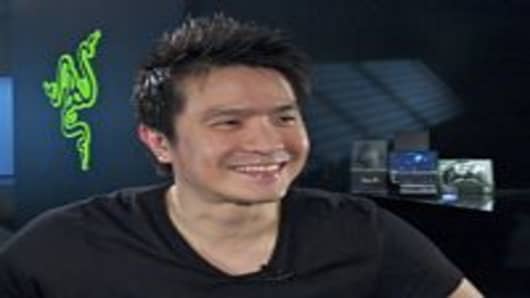A: I've always been a gamer first up and a lawyer second. While I enjoyed being a lawyer, there was always something inside of me that wanted to go out and do something different. That's when I decided to strike out. From a corporate governance perspective, getting the paperwork done, that's been great grounding. That's been a great fundamental degree to have, and I'm glad my parents sent me to law school.
Q: In 2005, you say gaming back then wasn't a sexy business. Did that pose serious challenges for you when you were writing that business proposal to bring in investors?
A: Well, back then gaming wasn't a sexy word like it is today. It was something for kids to do. My parents were against it and my friends were against it, but yeah I still believed in it. When we wrote a proposal, we wrote it on the premise that we wanted it to be for gamers, by gamers. From that perspective, we went out and told investors about it.
Q: You say you don't generally look at the competition. Isn't that being a little bit too complacent?
A: Well today, we are already the world's largest gaming peripherals company, and we spend a lot of time focusing on ourselves in terms of design. We do all our design in-house, so we don't outsource anything. So from that perspective, we'll always focus on competing internally. So for example, my different divisions in the company, they don't necessarily know what the other division is doing. So there's a lot of internal competition as opposed to external competition.
Q: The danger of looking internally is that externally there might be something you're missing out on. Aren't you afraid that someone might come on suddenly and take over?
A: Well, absolutely. From that perspective, what we do is we look at other companies in terms of their product line, not necessarily competition per se. Apple is a great example. They've got a phenomenal user experience and we look at that. They are not really competition but we really look at how they design products and really hope to learn as much as possible from different companies.
Q: How do you go about creating that culture of innovation within the company?
A: I wanted to create a company or build a company that I wanted to work at, where it was all built on meritocracy, on how hard I worked or where I wanted to be, and where we play games all the time. There is free food all day long. They can play games anywhere. We set up an entire LAN center for them, and we've pretty much built a cult brand. Internally for the staff, we've also built an internal cult. Some of them, the staff sleep under their cubicles. We used to have one of the staff from the UK who lived under his cubicle. I'm not kidding. [Now] he's gone off to India to seek enlightenment. I'm not kidding about that either.
This interview is an excerpt from CNBC’s longest-running feature program Managing Asia. Catch the full interview with anchor Christine Tan every weekend on CNBC.


